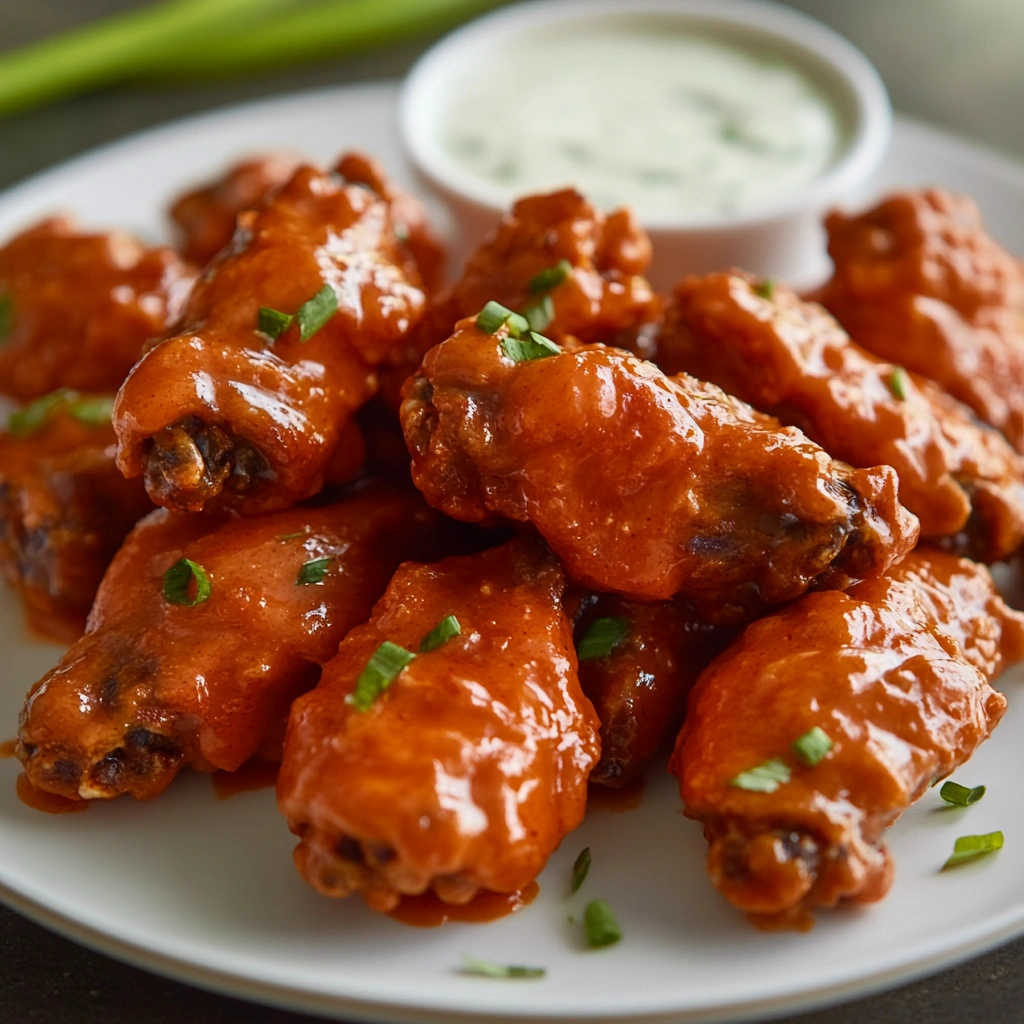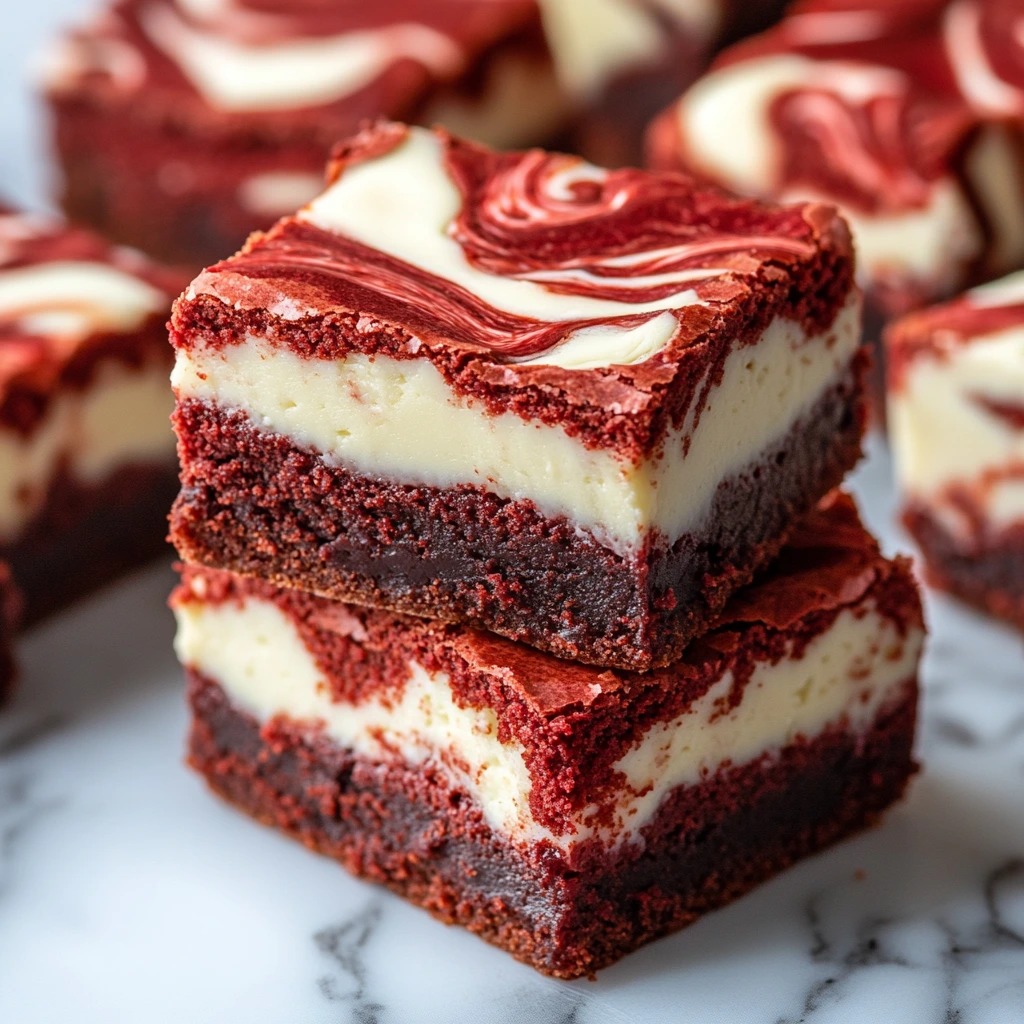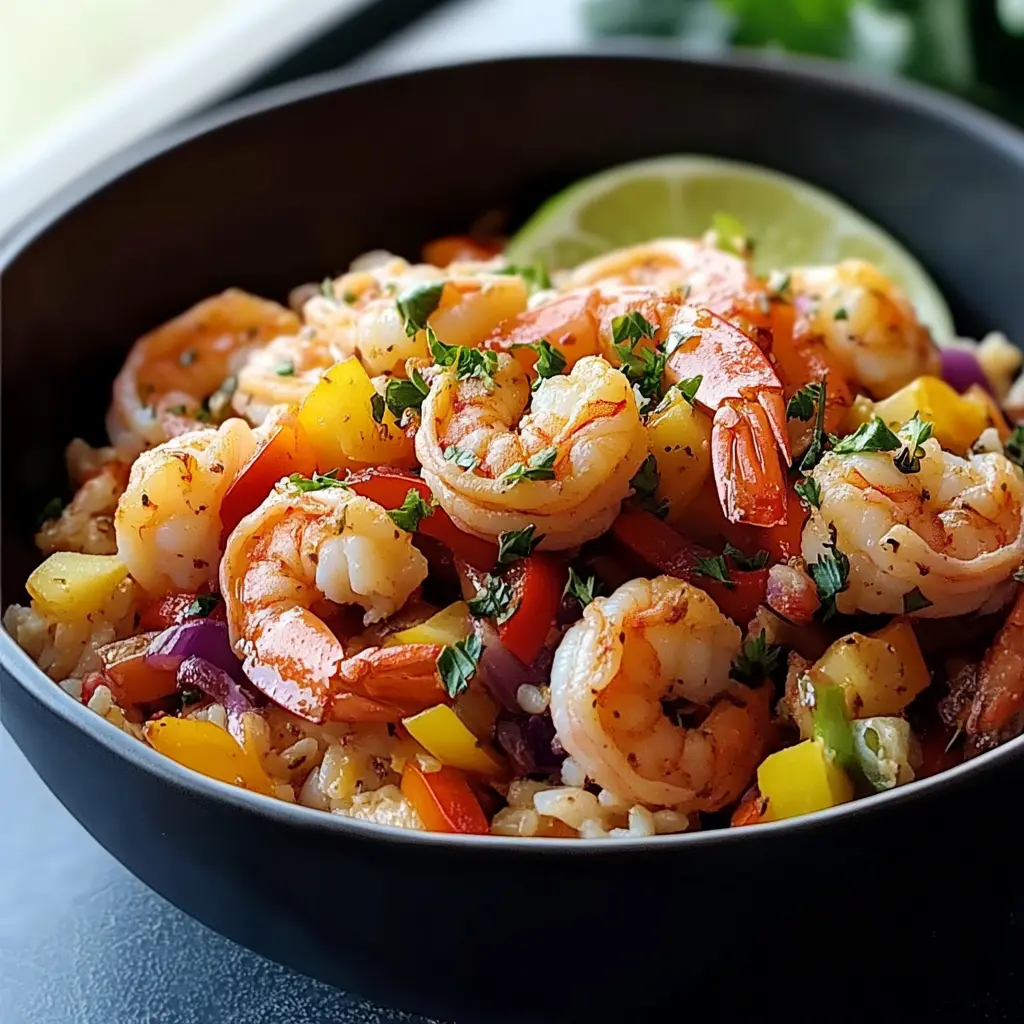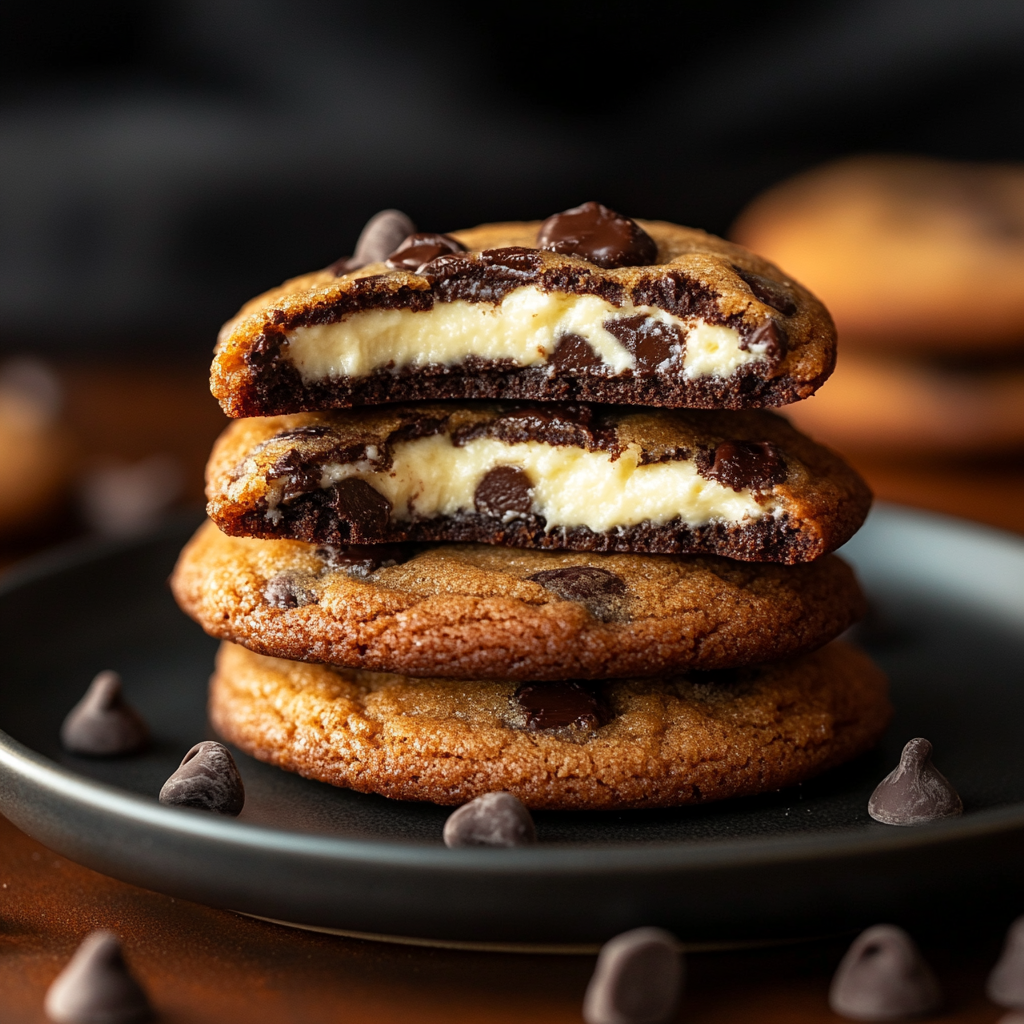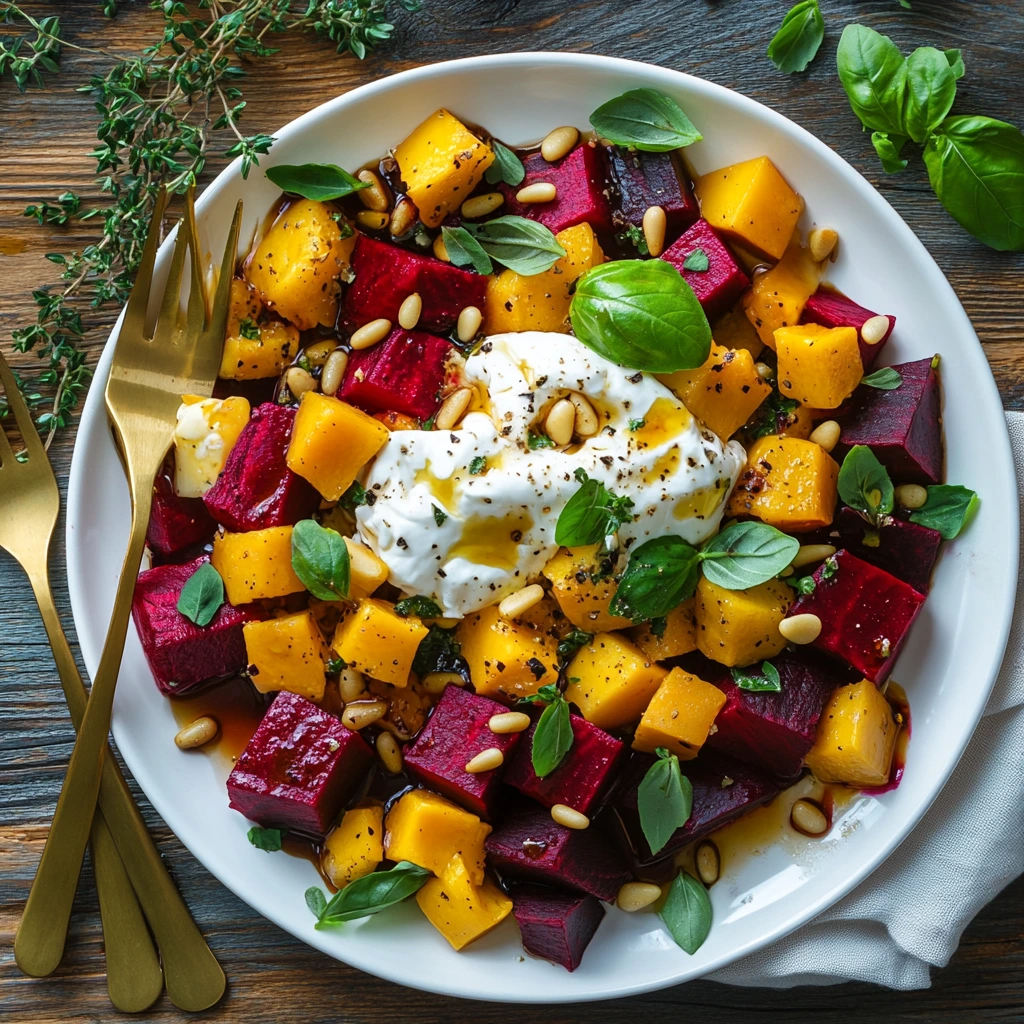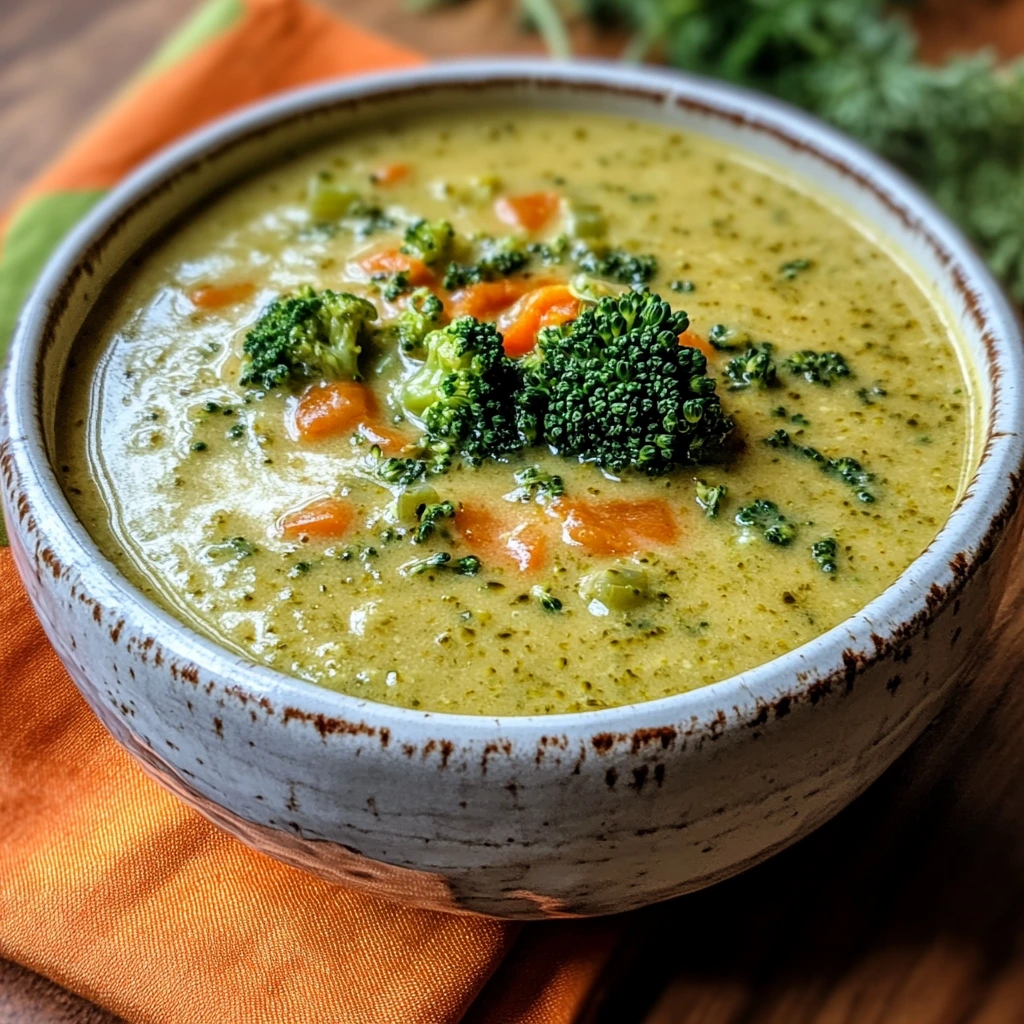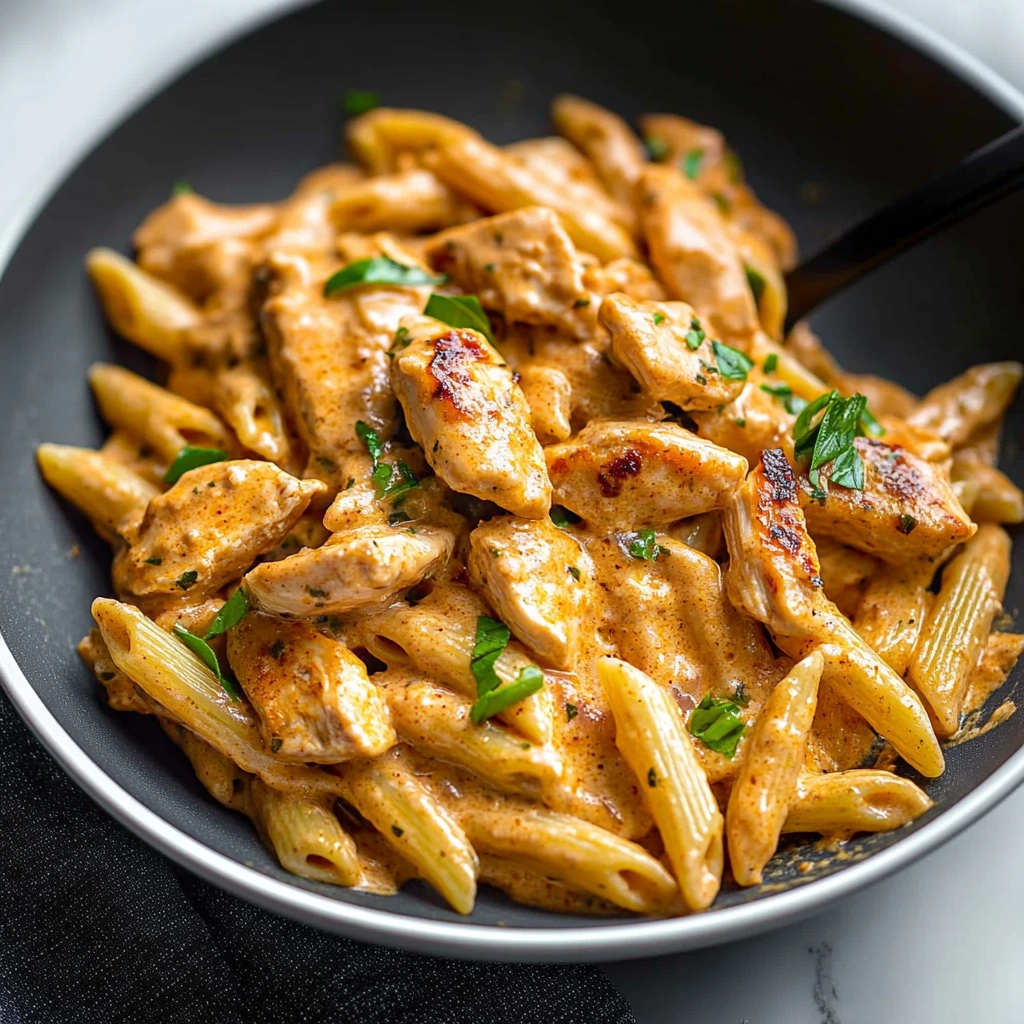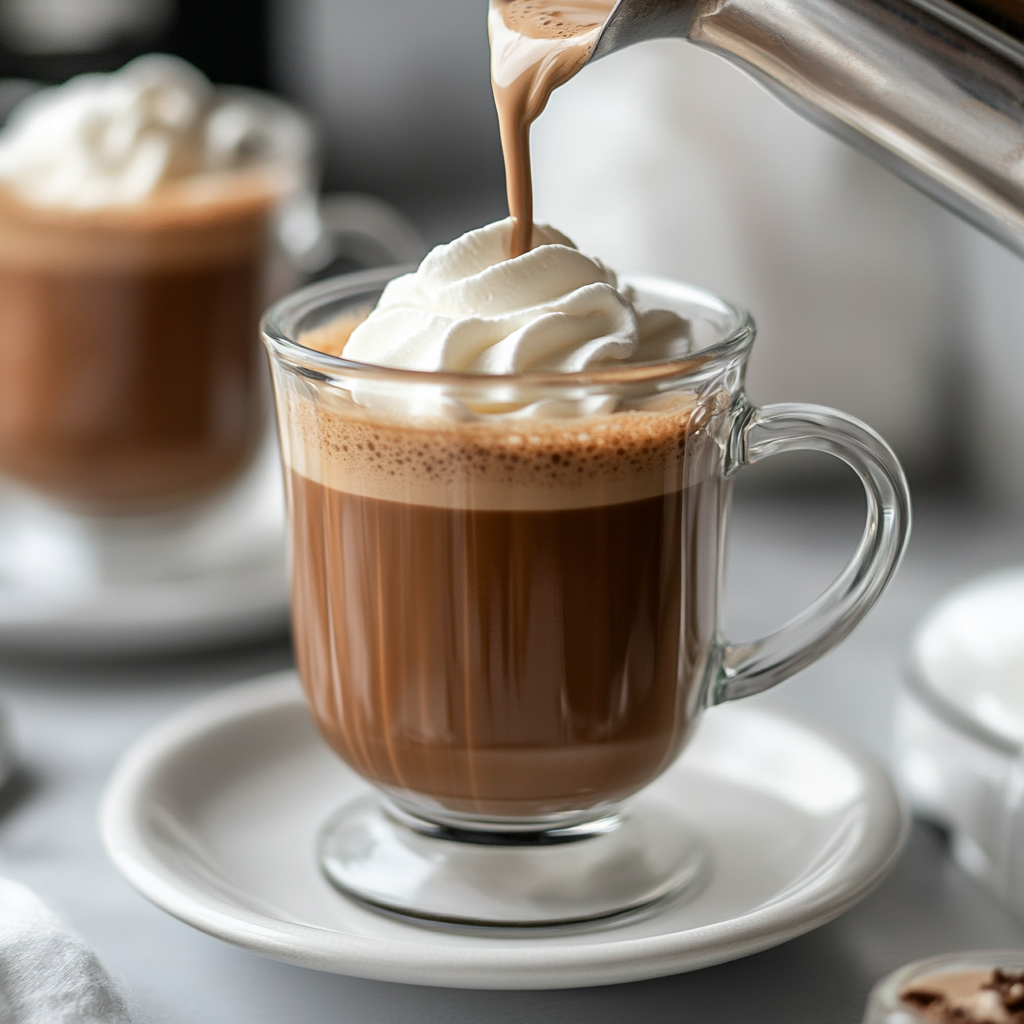Buffalo chicken wings are one of the most iconic and beloved appetizers in American cuisine. Known for their crispy texture, spicy tang, and rich buttery flavor, these wings have become a staple at sports bars, parties, and family gatherings. Whether served with a side of celery sticks and blue cheese dressing or devoured straight from the plate, Buffalo wings offer a perfect balance of heat and savory goodness that keeps people coming back for more.
The origins of Buffalo chicken wings trace back to Buffalo, New York, where they were first created in the 1960s. Since then, they have exploded in popularity, becoming a nationwide favorite and even inspiring global variations. Today, Buffalo wings are a must-have during game nights, especially during the Super Bowl, when millions of wings are consumed across the United States.
What sets Buffalo wings apart from other types of chicken wings is their signature sauce. Made from a simple yet flavorful combination of hot sauce (traditionally Frank’s RedHot), melted butter, and a touch of vinegar, this sauce creates the perfect blend of spiciness and tanginess. The wings themselves are typically deep-fried to achieve a crispy skin before being tossed in the sauce, ensuring every bite is packed with flavor.
Over the years, Buffalo wings have evolved to accommodate different preferences and dietary choices. While the classic deep-fried version remains the most popular, healthier alternatives such as baked or air-fried wings have gained traction. Additionally, variations like boneless Buffalo wings and different spice levels allow everyone to enjoy this classic dish in their own way.
The History of Buffalo Chicken Wings
Buffalo chicken wings have a fascinating history that dates back to the 1960s in Buffalo, New York. This now-iconic dish was born out of necessity, creativity, and a bit of happenstance, eventually becoming one of America’s most beloved comfort foods.
The Origin Story: Anchor Bar and Teressa Bellissimo
The most widely accepted origin story of Buffalo wings points to the Anchor Bar in Buffalo, New York. In 1964, Teressa Bellissimo, the co-owner of the bar, is said to have invented the dish when she needed to prepare a quick and satisfying late-night snack for her son and his friends. Using leftover chicken wings—then considered undesirable cuts—she deep-fried them, tossed them in a simple sauce made of hot sauce and butter, and served them with celery sticks and blue cheese dressing.
The wings were an instant hit, and soon after, the Anchor Bar began serving them as a regular menu item, calling them “Buffalo Wings” after their city of origin.
Buffalo Wings Gain Popularity
Throughout the 1970s and 1980s, Buffalo wings grew in popularity, spreading beyond Buffalo to other cities and eventually nationwide. Several key factors contributed to their rise:
- Sports Bar Culture: Buffalo wings became a popular food in bars, particularly because they paired well with beer.
- Super Bowl & Football Connection: As football culture grew, Buffalo wings became a game-day favorite, leading to massive consumption, especially during the Super Bowl.
- Chain Restaurants: The rise of chains like Buffalo Wild Wings and Wingstop in the 1990s and 2000s helped solidify wings as a mainstream American dish.
National Buffalo Wing Festival & Global Influence
In 2002, Buffalo’s love for wings was officially recognized with the creation of the National Buffalo Wing Festival, an annual event celebrating the dish with eating contests, cook-offs, and wing tastings. Today, Buffalo wings have inspired countless variations worldwide, from Korean-style spicy wings to unique dry rubs and fusion flavors.
What Makes Buffalo Wings Unique?
Buffalo wings stand out from other types of chicken wings due to their signature flavor, cooking method, and cultural significance. While many variations of chicken wings exist, the classic Buffalo wing has a distinct identity that sets it apart.
1. The Signature Buffalo Sauce
One of the key elements that make Buffalo wings unique is their tangy, spicy, and buttery sauce. Traditional Buffalo sauce is made from just a few simple ingredients:
- Hot sauce (typically Frank’s RedHot)
- Melted butter for a smooth, rich flavor
- Vinegar and seasonings for added tang
Unlike BBQ or teriyaki wings, which focus on sweetness, Buffalo wings deliver a bold heat balanced by the creaminess of butter. The sauce evenly coats the wings, creating a perfect blend of spiciness and tanginess in every bite.
2. Crispy Yet Saucy Texture
Buffalo wings are known for their crispy exterior, which contrasts perfectly with the saucy coating. The best Buffalo wings are typically deep-fried without breading, allowing the skin to crisp up while remaining light. This crispy skin helps the sauce cling to the wings without making them soggy. Some people also opt for baking or air-frying for a healthier alternative while maintaining crispiness.
3. Served with Blue Cheese & Celery
Another unique feature of Buffalo wings is their traditional side pairings:
- Blue cheese dressing – its creamy, tangy flavor balances the heat of the wings.
- Celery and carrot sticks – these provide a refreshing crunch to complement the spice.
4. A Cultural Icon
Buffalo wings aren’t just food—they’re a social and cultural staple. Whether at Super Bowl parties, sports bars, or festivals, Buffalo wings are a go-to dish for gatherings and celebrations, making them more than just another type of chicken wing.
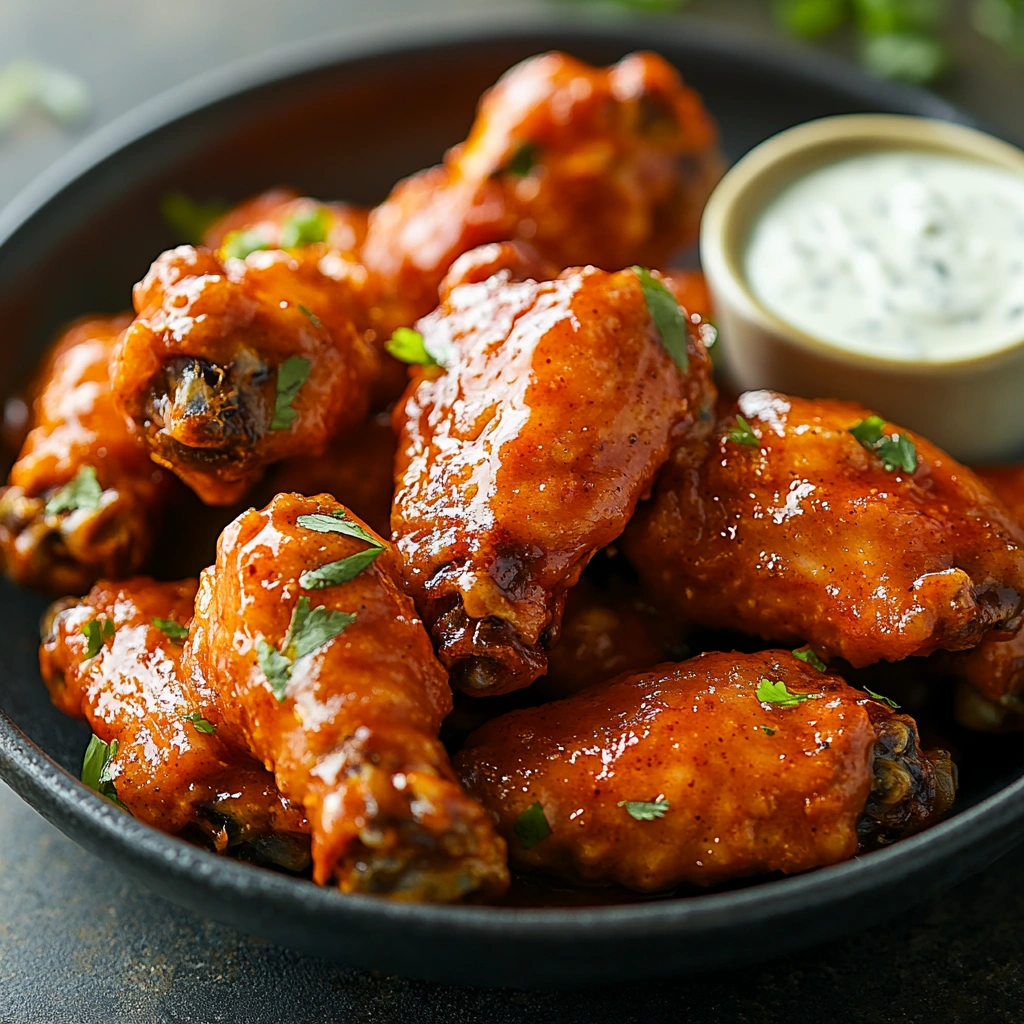
Traditional vs. Modern Buffalo Wings
Buffalo wings have evolved significantly since their invention in 1964 at the Anchor Bar in Buffalo, New York. While the traditional Buffalo wing remains a beloved classic, modern variations have emerged to cater to different tastes, dietary preferences, and cooking methods.
1. Traditional Buffalo Wings
The original Buffalo wing follows a simple yet perfected formula:
- Preparation: Whole chicken wings are separated into drumettes and flats.
- Cooking Method: The wings are deep-fried without breading, ensuring a crispy skin.
- Sauce: Tossed in a classic Buffalo sauce made from Frank’s RedHot sauce, melted butter, and a dash of vinegar.
- Serving Style: Accompanied by blue cheese dressing and celery sticks for balance.
Traditional Buffalo wings are known for their bold, spicy, and tangy flavor with a crispy yet saucy texture.
2. Modern Buffalo Wing Variations
Over the years, Buffalo wings have been adapted in various ways:
Cooking Methods
- Baked Buffalo Wings – A healthier alternative that reduces oil while maintaining crispiness.
- Air-Fried Buffalo Wings – Uses hot air circulation for a crunchy texture with less fat.
- Grilled Buffalo Wings – Adds a smoky flavor and a slightly charred texture.
Different Wing Styles
- Boneless Buffalo Wings – Made with breaded chicken breast pieces, resembling nuggets.
- Extra-Crispy Wings – Some modern versions use cornstarch or double-frying for an ultra-crunchy texture.
Flavor Variations
- Honey Buffalo Wings – A touch of honey balances the spice.
- Garlic Parmesan Buffalo Wings – A less spicy twist with garlicky, cheesy goodness.
- Extra Hot or Mild Buffalo Wings – Adjusting the spice level for different preferences.
The Role of Buffalo Wings in American Culture
Buffalo wings are more than just a popular appetizer—they have become a cultural icon in the United States. From sports bars to family gatherings, these spicy, crispy wings hold a special place in American food traditions.
1. A Game-Day Essential
Buffalo wings are synonymous with sports culture, especially during football season and the Super Bowl. They are one of the most consumed foods on Super Bowl Sunday, with Americans eating over 1.4 billion wings during the big game. Their shareable nature and bold flavors make them the perfect snack for watching sports with friends and family.
2. A Staple at Bars & Restaurants
Buffalo wings are a must-have item at bars and casual dining restaurants. Their spicy kick pairs perfectly with beer, making them a go-to order at sports bars across the country. Chain restaurants like Buffalo Wild Wings and Wingstop have further popularized wings by offering various flavors and spice levels, attracting a wide range of customers.
3. The National Buffalo Wing Festival
To celebrate the dish’s origins, Buffalo, New York, hosts the National Buffalo Wing Festival every year. Thousands of wing lovers gather to enjoy eating contests, unique wing flavors, and cook-offs featuring some of the best wing chefs in the country.
4. A Food Trend That Continues to Evolve
Buffalo wings have inspired global variations, from Korean-style wings to vegan cauliflower wings. Their versatility and ability to adapt to new trends ensure they remain a favorite comfort food for generations to come.
Classic Buffalo Chicken Wing Recipe
Buffalo chicken wings are easy to make at home, requiring just a few key ingredients and the right cooking method. Below is a traditional recipe that delivers crispy, saucy, and flavorful wings every time.
Ingredients:
For the Wings:
- 2 lbs chicken wings (drumettes and flats)
- 1 tsp salt
- 1 tsp black pepper
- 1 tsp garlic powder
- 1 tbsp baking powder (for extra crispiness)
- Oil for frying (if deep-frying)
For the Buffalo Sauce:
- ½ cup Frank’s RedHot sauce (or another cayenne pepper sauce)
- 4 tbsp unsalted butter, melted
- 1 tbsp white vinegar
- 1 tsp garlic powder
Instructions:
1. Prepping the Wings:
- Pat the wings completely dry using paper towels (moisture prevents crispiness).
- Toss them with salt, pepper, garlic powder, and baking powder for extra crunch.
2. Cooking Methods:
- Deep-fry (traditional method): Heat oil to 375°F (190°C) and fry wings for 10-12 minutes until golden brown. Drain on a paper towel.
- Bake (healthier option): Preheat oven to 425°F (220°C), place wings on a wire rack over a baking sheet, and bake for 45-50 minutes, flipping halfway.
- Air-fry (quick & crispy): Set air fryer to 400°F (200°C) and cook for 20-25 minutes, shaking the basket occasionally.
3. Making the Buffalo Sauce:
- In a small saucepan, melt butter over low heat.
- Stir in Frank’s RedHot sauce, vinegar, and garlic powder until smooth.
4. Tossing & Serving:
- Place cooked wings in a large bowl and toss them in Buffalo sauce until evenly coated.
- Serve with blue cheese dressing, celery, and carrot sticks.
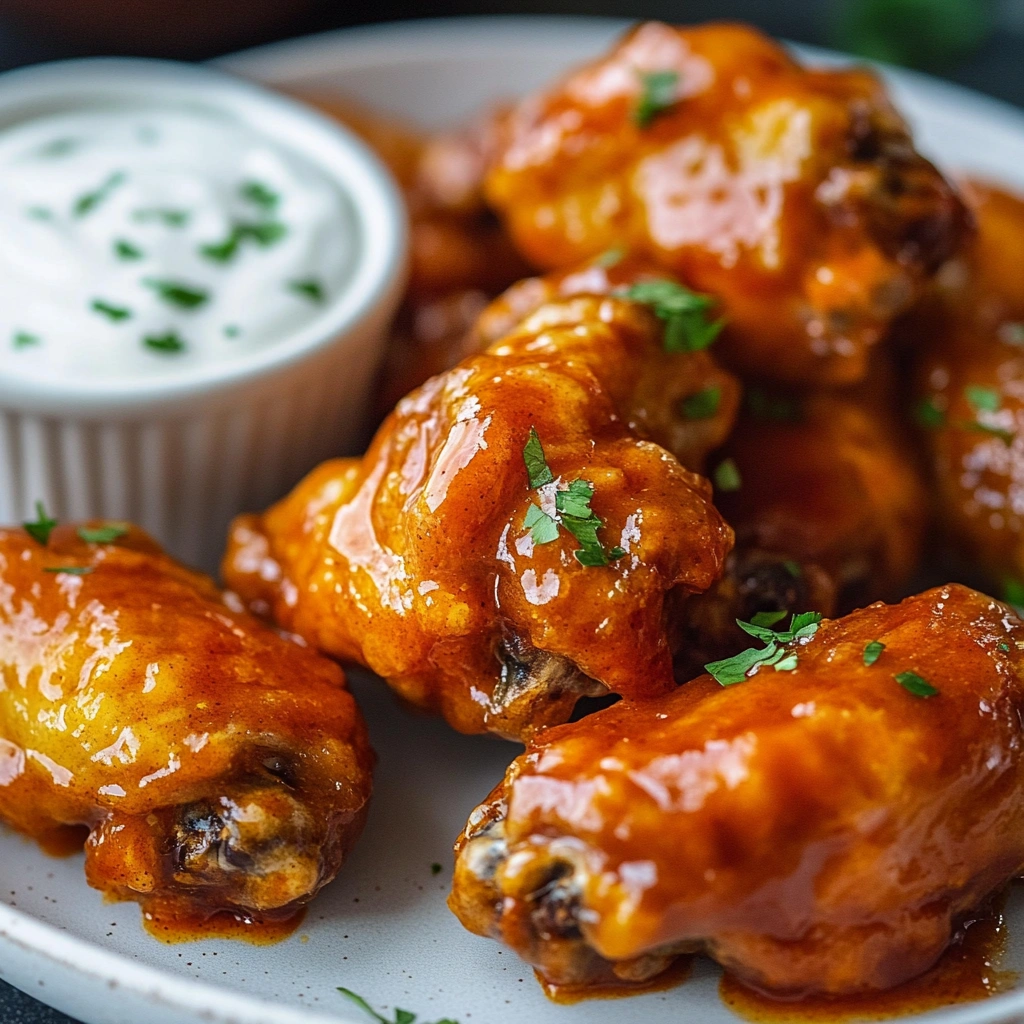
Different Cooking Methods Explained
Buffalo wings can be prepared using various cooking methods, each with its own advantages. Below are the most common ways to make Buffalo wings at home.
1. Deep-Fried Buffalo Wings (Traditional Method)
- The classic way to make Buffalo wings.
- Pros: Extra crispy texture, quick cooking time (10-12 minutes).
- Cons: Uses a lot of oil, higher in calories.
- Tip: Fry in small batches to maintain even cooking.
2. Baked Buffalo Wings (Healthier Option)
- Ideal for those looking to reduce oil intake.
- Pros: Less greasy, still crispy with proper technique.
- Cons: Takes longer (45-50 minutes).
- Tip: Bake on a wire rack so heat circulates evenly.
3. Air-Fried Buffalo Wings (Fast & Crispy)
- Uses hot air circulation to crisp up the wings.
- Pros: Less oil, cooks quickly (20-25 minutes).
- Cons: Can be less crispy than deep-fried.
- Tip: Shake the basket halfway for even cooking.
4. Grilled Buffalo Wings (Smoky Flavor)
- A summer-friendly method with a unique charred taste.
- Pros: Adds smoky depth, reduces oil usage.
- Cons: Can dry out if overcooked.
- Tip: Marinate wings before grilling to keep them juicy.
Each method offers a unique twist on the classic Buffalo wing, allowing you to pick the best option based on your preference.
Best Sauces & Heat Levels
Buffalo wings come in a variety of spice levels and flavor variations, making them customizable for everyone’s taste buds.
1. Classic Buffalo Sauce Levels:
- Mild Buffalo Wings – More butter, less hot sauce (for those who prefer a little heat).
- Medium Buffalo Wings – A balanced mix of butter and hot sauce (traditional level).
- Hot Buffalo Wings – Less butter, more hot sauce (spicier kick).
- Extra Hot Wings – Uses additional hot sauces like Tabasco or ghost pepper sauce.
2. Popular Buffalo Wing Sauce Variations:
- Honey Buffalo Wings – A mix of Buffalo sauce and honey for a sweet-heat combo.
- Garlic Parmesan Wings – Buttery garlic sauce with Parmesan cheese.
- BBQ Buffalo Wings – A mix of Buffalo sauce and smoky BBQ sauce.
- Lemon Pepper Buffalo Wings – A tangy citrus twist with a peppery bite.
3. Store-Bought vs. Homemade Sauce
- Store-Bought: Convenient, but some have preservatives.
- Homemade: Allows customization of spice level and freshness.
Buffalo sauce can be customized to suit different spice preferences, making it a versatile favorite.
Best Side Dishes & Dips for Buffalo Wings
Buffalo wings are best enjoyed with classic side dishes and dips that complement their heat and crunch.
1. Classic Sides:
- Celery & Carrot Sticks – A cooling contrast to the heat.
- French Fries – Crispy and salty, a perfect pairing.
- Onion Rings – Adds a crunchy, savory side.
- Mac & Cheese – Creamy, cheesy balance to the spice.
2. Best Dips for Buffalo Wings:
- Blue Cheese Dressing – Traditional dip, its tangy and creamy flavor balances the spice.
- Ranch Dressing – A milder, herby alternative to blue cheese.
- Honey Mustard – Sweet and tangy contrast.
The right side dishes and dips can enhance the overall Buffalo wing experience.
Tips & Tricks for Perfect Buffalo Wings
To make the best Buffalo wings, follow these expert tips:
1. Achieving Maximum Crispiness
- Pat the wings completely dry before cooking.
- Use baking powder in seasoning to create a crispy crust.
- If baking, cook on a wire rack for air circulation.
2. Getting the Sauce Right
- Toss the wings right before serving to prevent sogginess.
- Use melted butter to balance the heat in Buffalo sauce.
3. Avoiding Common Mistakes
- Overcrowding the pan (frying) – Wings won’t crisp up.
- Skipping the resting time – Let wings sit for a few minutes after frying.
- Overcooking on the grill – This can dry out the meat.
These simple tricks ensure perfectly crispy, flavorful wings every time.
FAQs (Based on “People Also Ask”)
1. Why Are They Called Buffalo Wings?
Buffalo wings are named after Buffalo, New York, where they were first created at the Anchor Bar in 1964.
2. What’s the Best Sauce for Buffalo Wings?
The classic Buffalo sauce uses Frank’s RedHot and butter, but variations like honey Buffalo, garlic Parmesan, and BBQ Buffalo are also popular.
3. Are Buffalo Wings Always Spicy?
No, Buffalo wings can be mild, medium, or hot, depending on the amount of hot sauce used.
4. Can I Make Buffalo Wings Without Frying?
Yes! You can bake, air-fry, or grill Buffalo wings for healthier alternatives.
5. What’s the Difference Between Buffalo Wings and Hot Wings?
Buffalo wings have a specific sauce (hot sauce + butter), while hot wings can have any spicy sauce.
Print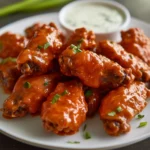
Buffalo chicken wings
Description
Buffalo chicken wings are crispy, juicy, and coated in a tangy, buttery hot sauce that delivers the perfect balance of heat and flavor. Originating from Buffalo, New York, this dish has become a game-day favorite and a staple at sports bars and gatherings. Whether deep-fried, baked, or air-fried, these wings are incredibly delicious, easy to make, and perfect for dipping in blue cheese or ranch dressing.
This classic recipe ensures restaurant-quality wings at home, with a crispy exterior and a flavorful, spicy Buffalo sauce. Serve with celery, carrot sticks, and your favorite dip for the ultimate wing experience.
Ingredients
For the fins:
- Chicken Wings – 12 pcs
- Tabasco – 3 tbsp.
- Baking Soda
- Melted Butter – 3 tbsp.
- Paprika Powder – 1 tbsp.
- Salt & Pepper
For the Sauce:
- Sour Sauce – 0.5 glass(es)
- Mayonnaise – 0.5 glass(es)
- Garlic – 1 pod (s)
- Blue Cheese – 0.5 glass(es)
- White Vinegar – 1 tbsp.
Instructions
-
Step 1
Prepare the sauce:
-
Step 2
Peel and chop the garlic.
-
Step 3
Melt the blue cheese in a saucepan over low heat.
-
Step 4
In a bowl, mix the sour sauce, melted blue cheese, mayonnaise, white vinegar and minced garlic.
-
Step 5
Cover the bowl with cling film and refrigerate the sauce until serving.
-
Step 6
Prepare the chicken wings:
-
Step 7
Clean the chicken wings under cold water and then dry them well with paper towels. Using your hands, sprinkle them with baking soda. Set aside.
-
Step 8
In a bowl, mix the melted butter with the Tabasco, paprika powder, salt and pepper.
-
Step 9
Place the chicken wings in a freezer bag and pour the marinade over them (reserve 3 tablespoons of the marinade). Seal the bag, shake and let marinate for 30 minutes at room temperature.
-
Step 10
After this time, drain the chicken wings and place them in an ovenproof dish.
-
Step 11
Place the chicken wings under the broiler for about 15 minutes, until cooked as desired.
-
Step 12
At the end of cooking, pour the reserved marinade over the cooked chicken wings.
-
Step 13
Serve immediately with the previously prepared sauce.
Notes
1. How to Get Extra-Crispy Wings
- Pat the wings completely dry before seasoning to remove excess moisture.
- Toss wings with baking powder (not baking soda!) to help create a crispier skin.
- If baking, use a wire rack over a baking sheet for even airflow.
2. Sauce Tips
- For milder wings, add more butter to the sauce.
- For spicier wings, increase the hot sauce ratio or add a dash of cayenne pepper.
- Toss wings in the sauce just before serving to maintain crispiness.
3. Cooking Variations
- Deep-Fried: The traditional method for maximum crispiness.
- Baked: A healthier alternative that still delivers crispy results.
- Air-Fried: A faster, oil-free method with great texture.
- Grilled: Adds a smoky charred flavor, perfect for summer cookouts.
4. Dipping & Serving Suggestions
- Classic dips: Blue cheese dressing (traditional) or ranch dressing.
- Serve with celery and carrot sticks for a refreshing crunch.
- Pair with fries, onion rings, or mac & cheese for a full meal.
5. Make-Ahead & Storage Tips
- Make Ahead: Fry or bake the wings and store them without sauce in the fridge for up to 2 days. Reheat and toss in sauce before serving.
- Freezing: Store cooked, unsauced wings in an airtight container for up to 3 months. Reheat in the oven at 375°F for 15-20 minutes.
- Reheating: Avoid microwaving (it makes them soggy). Instead, reheat in an oven or air fryer at 375°F until crispy.


